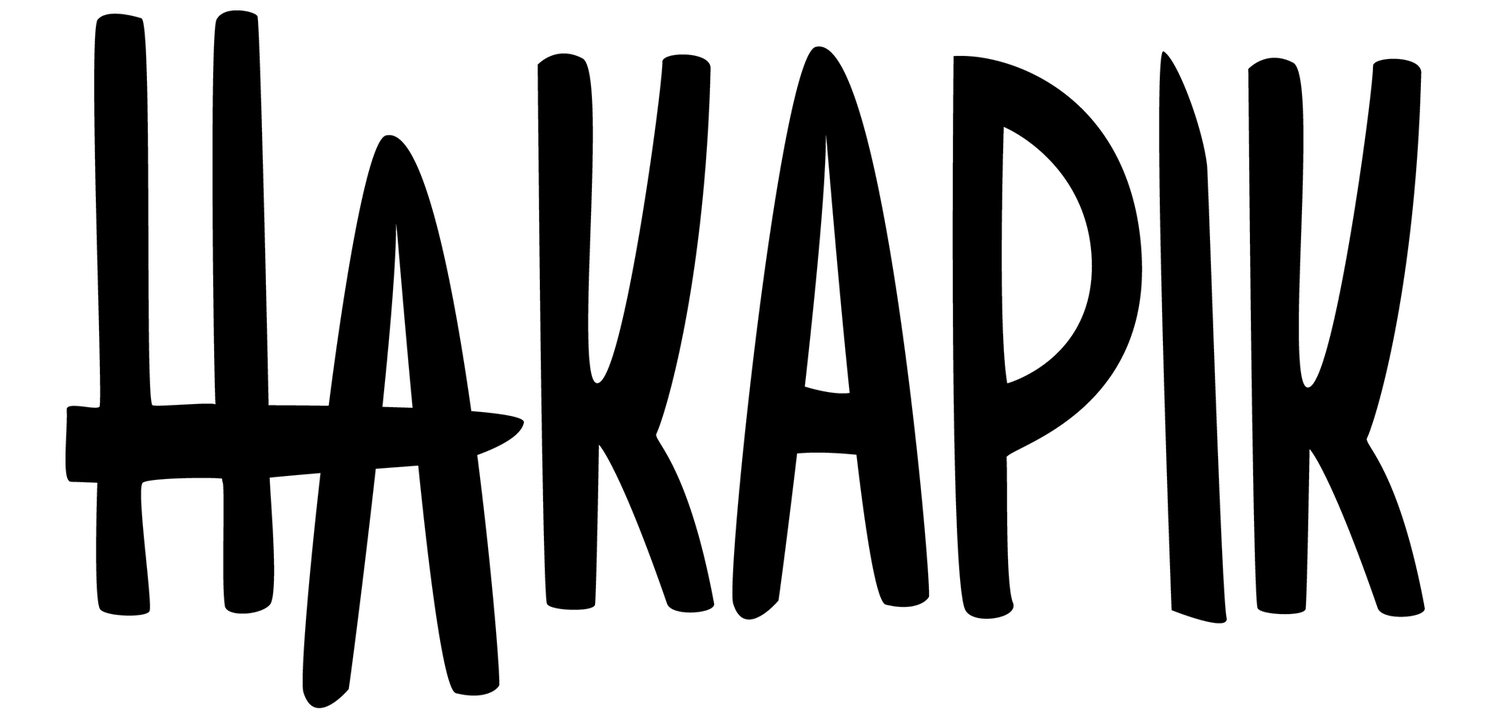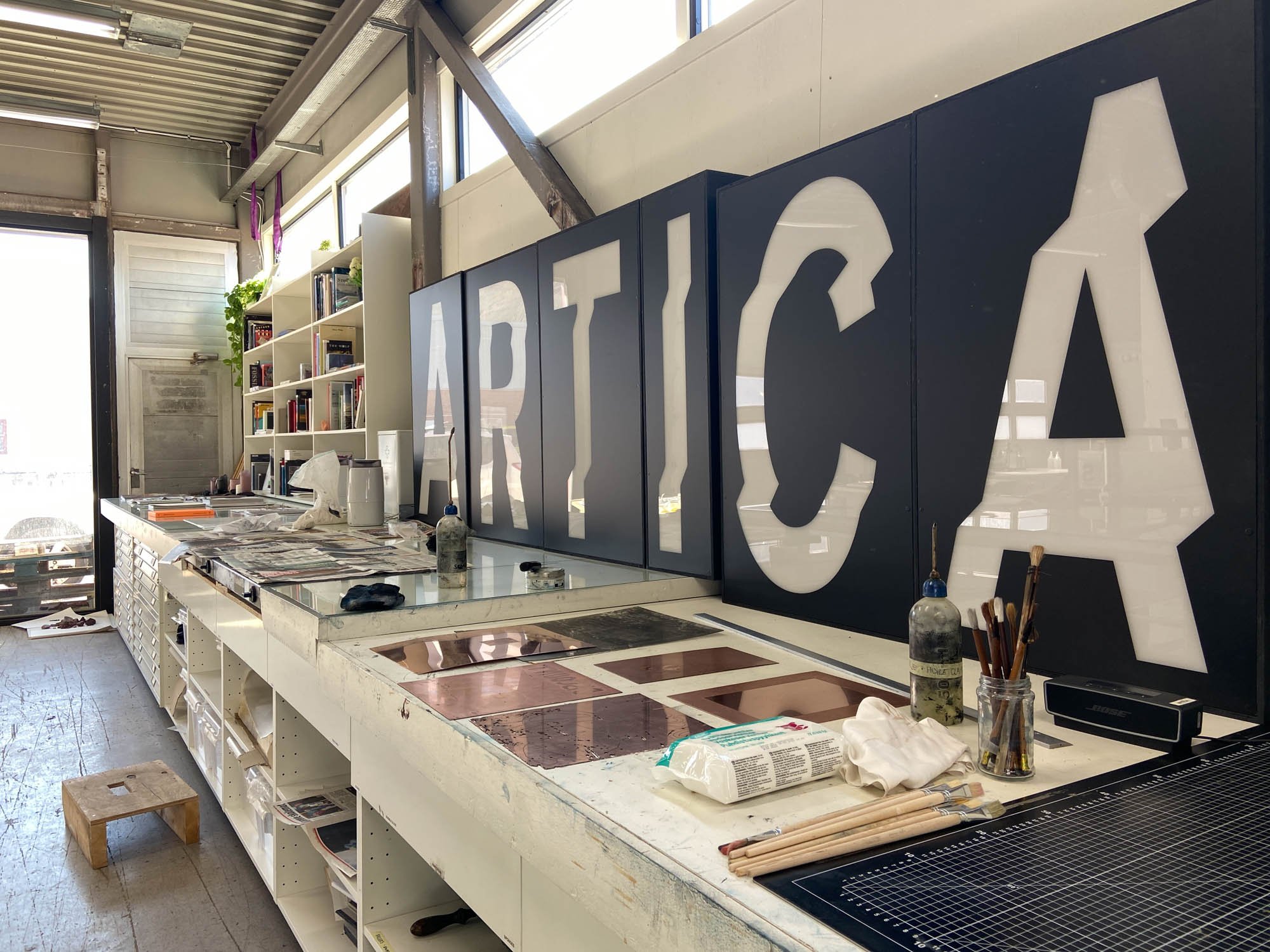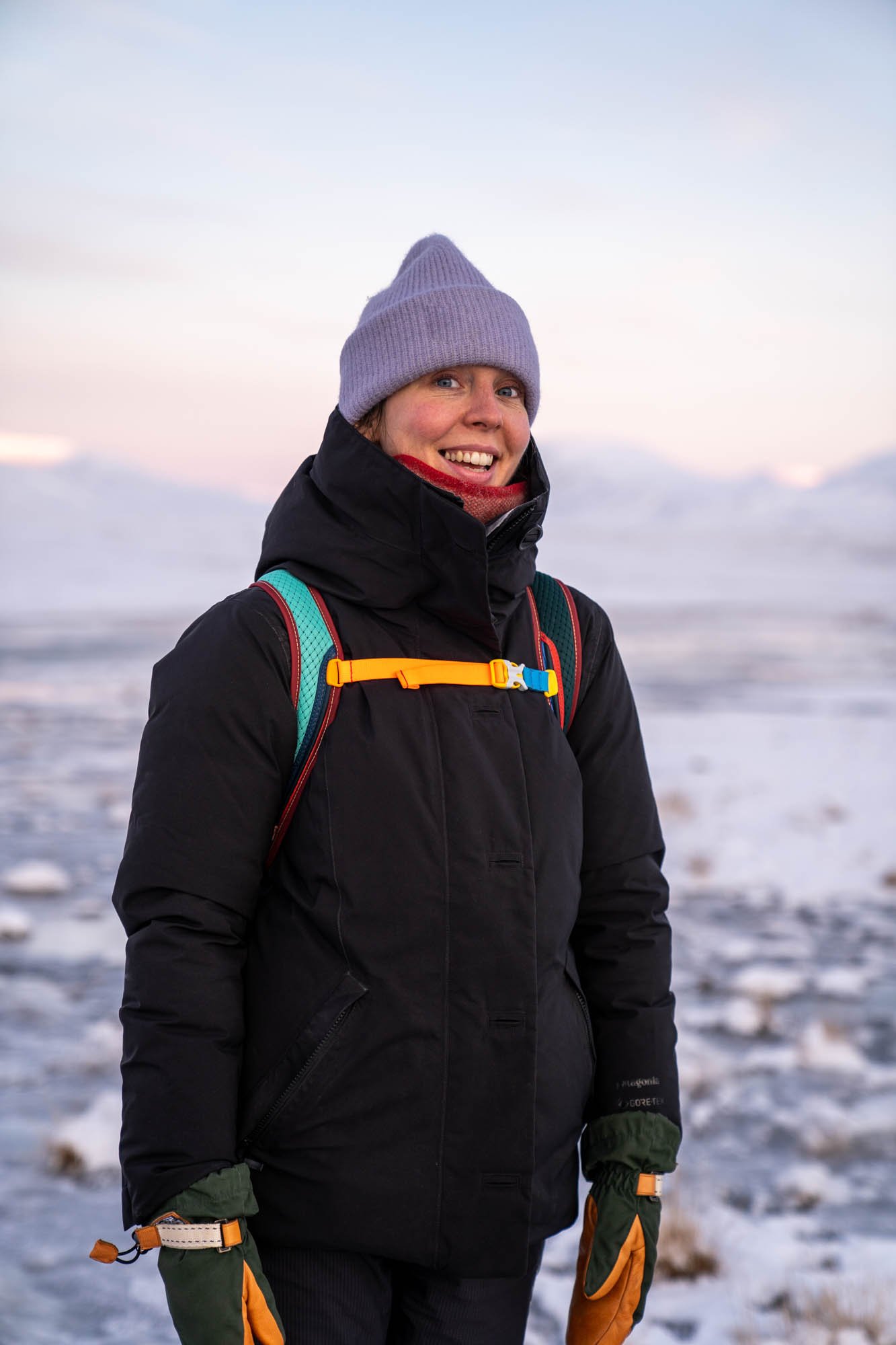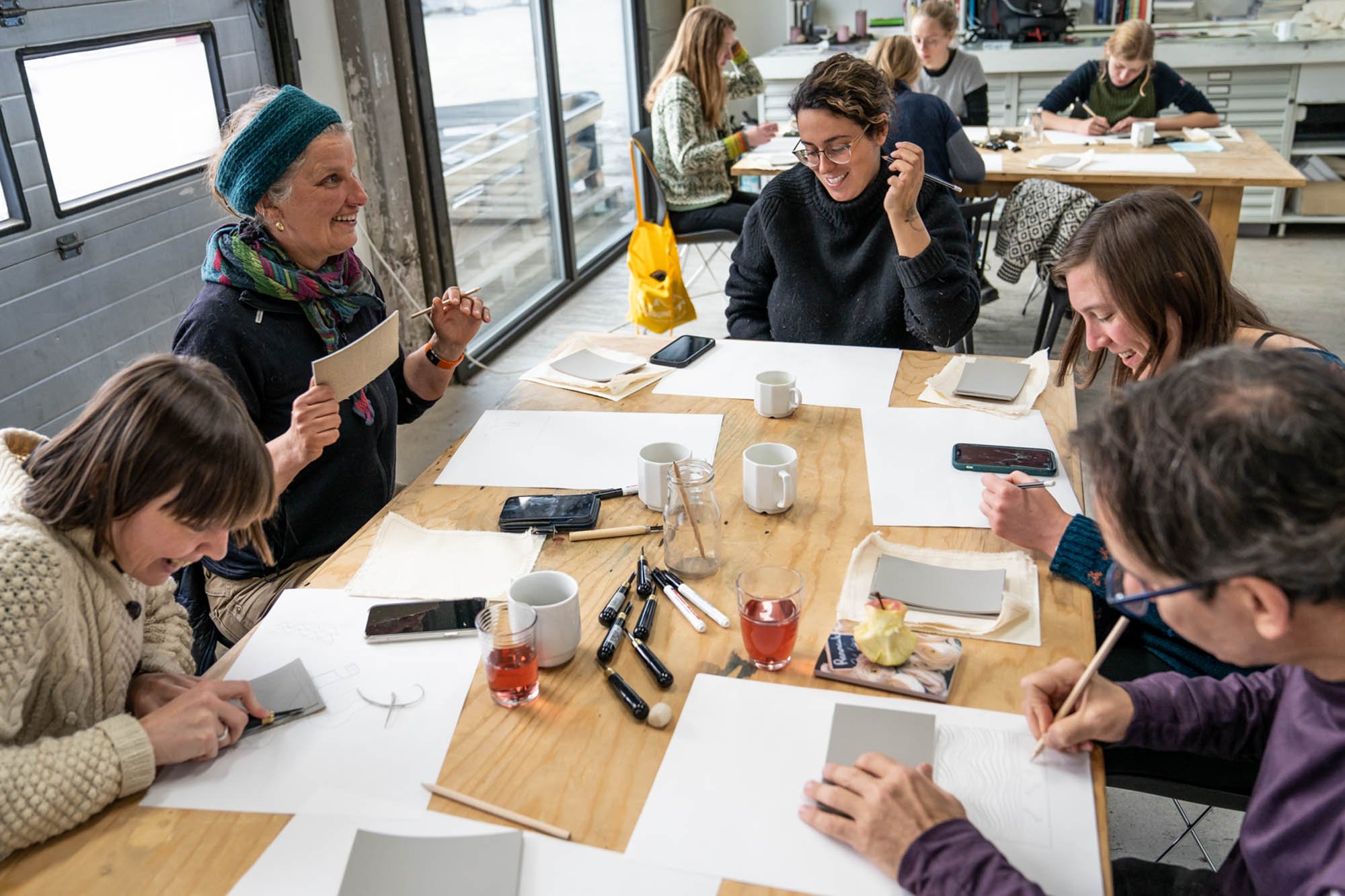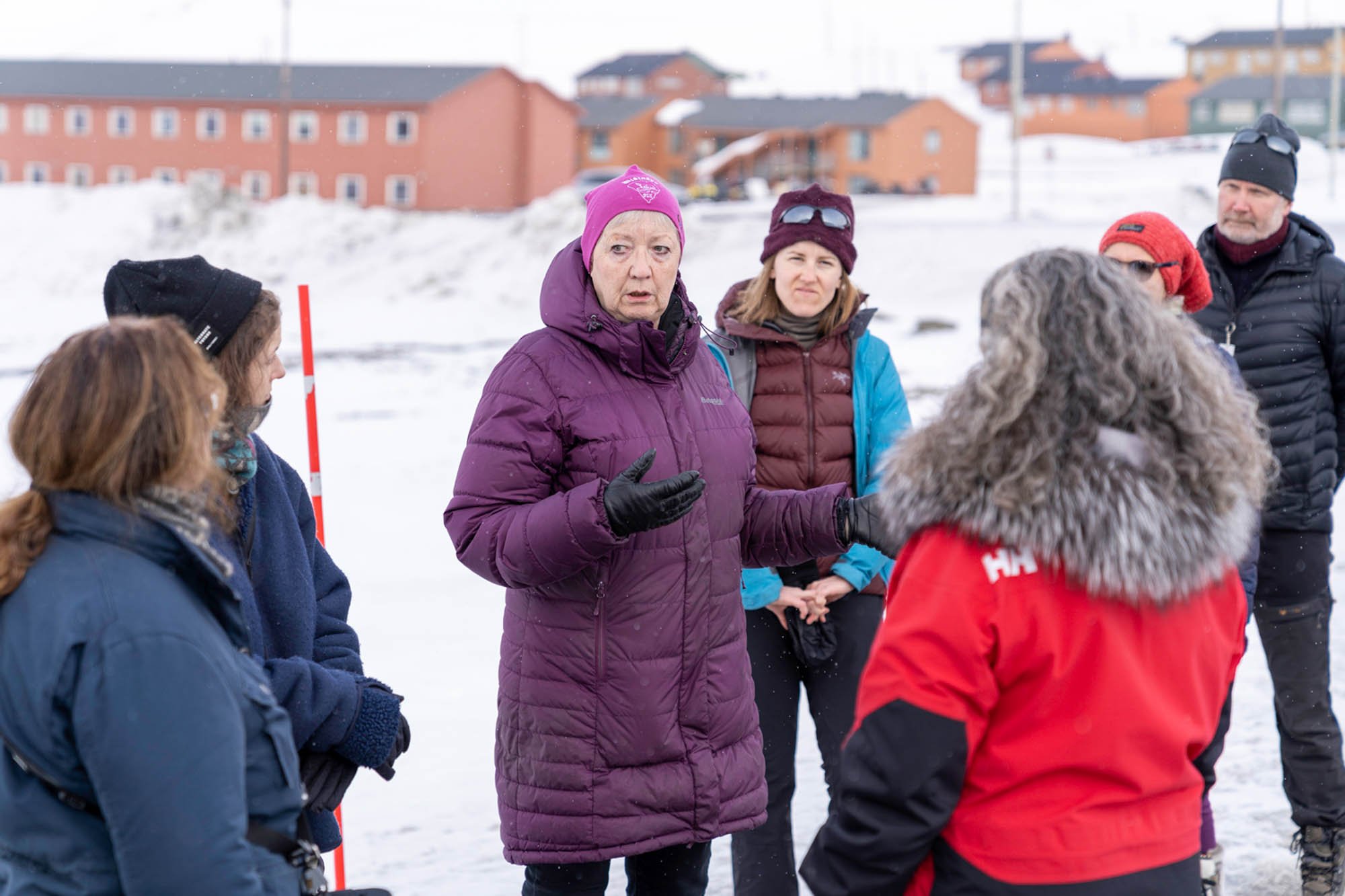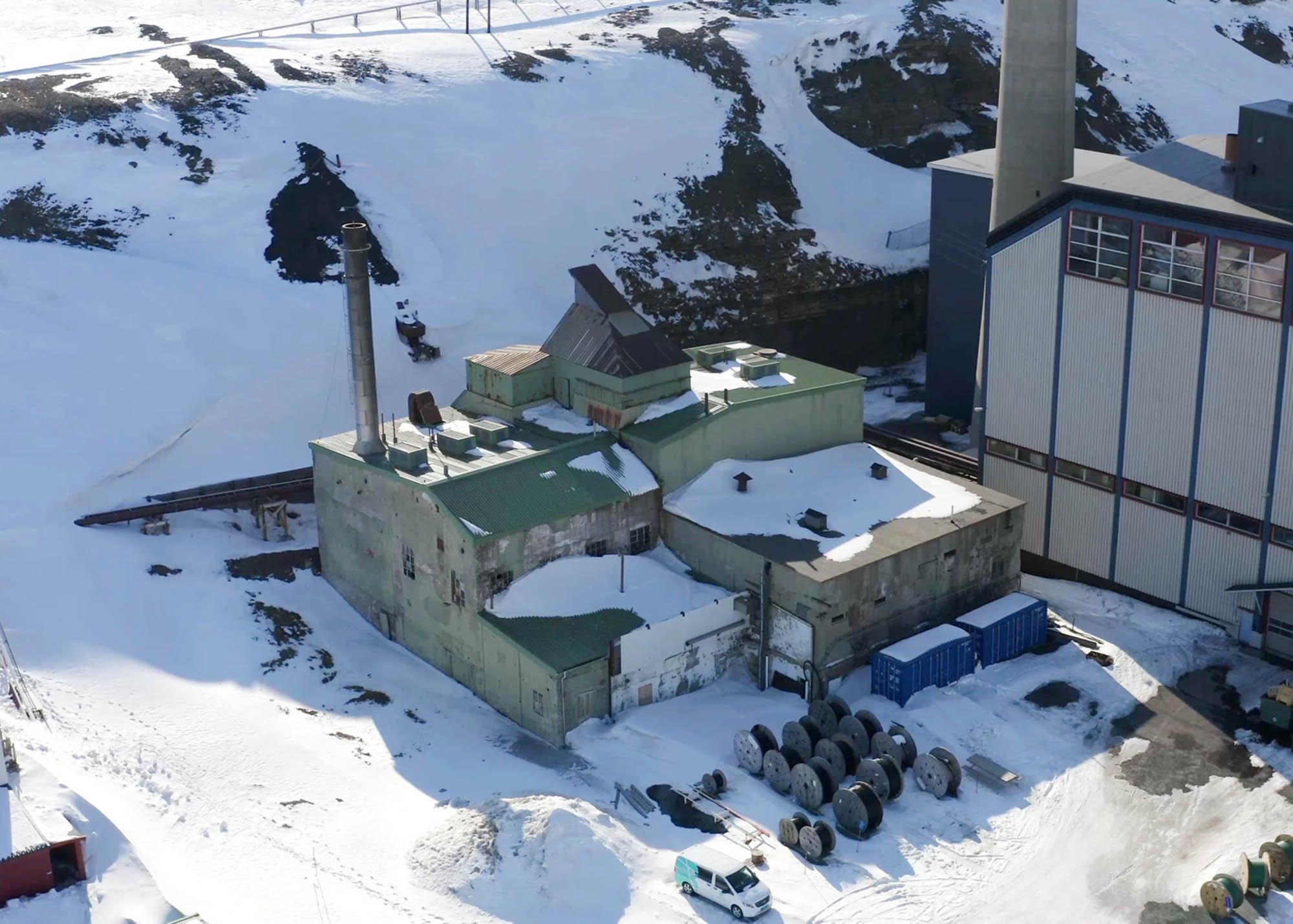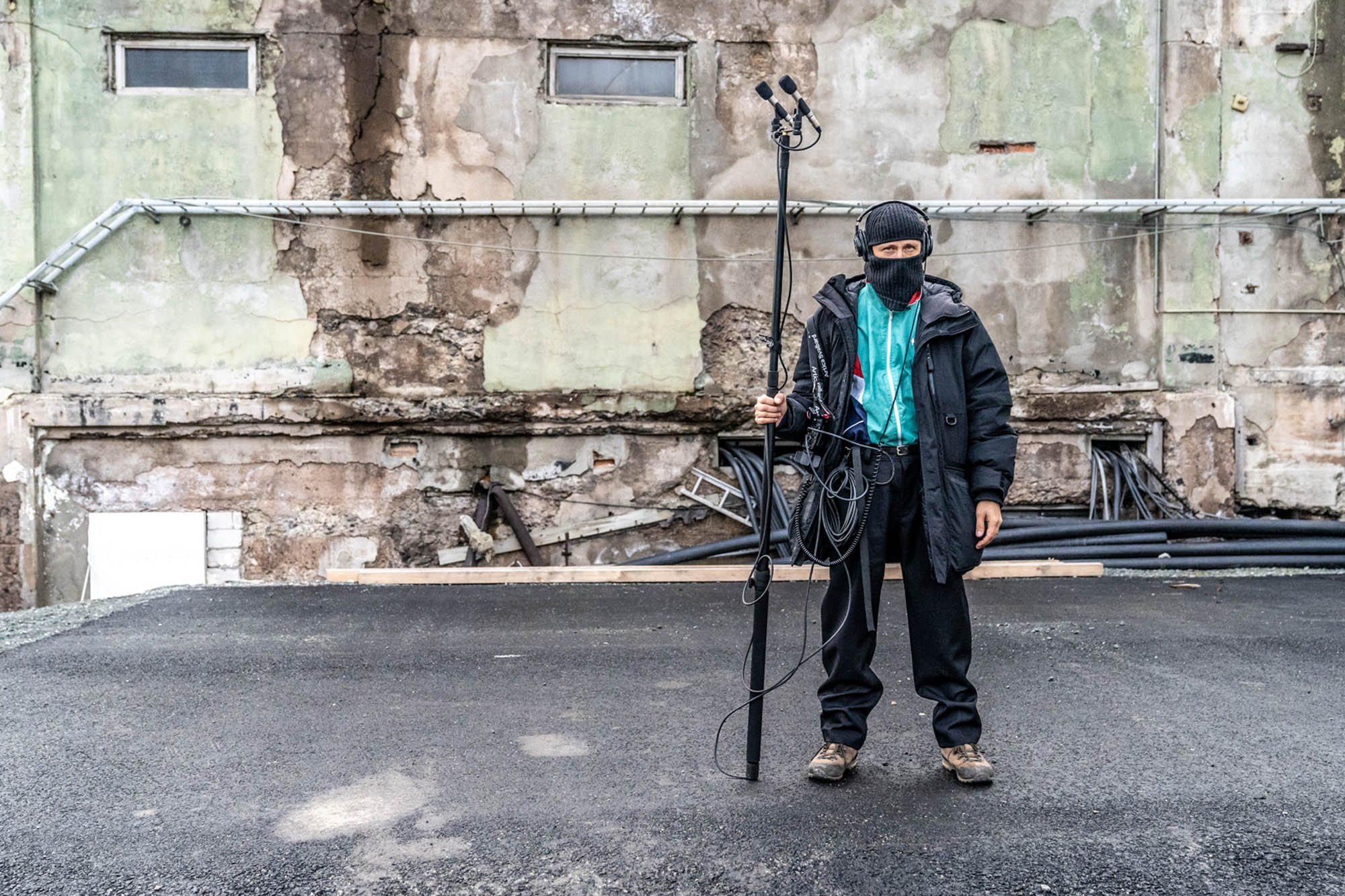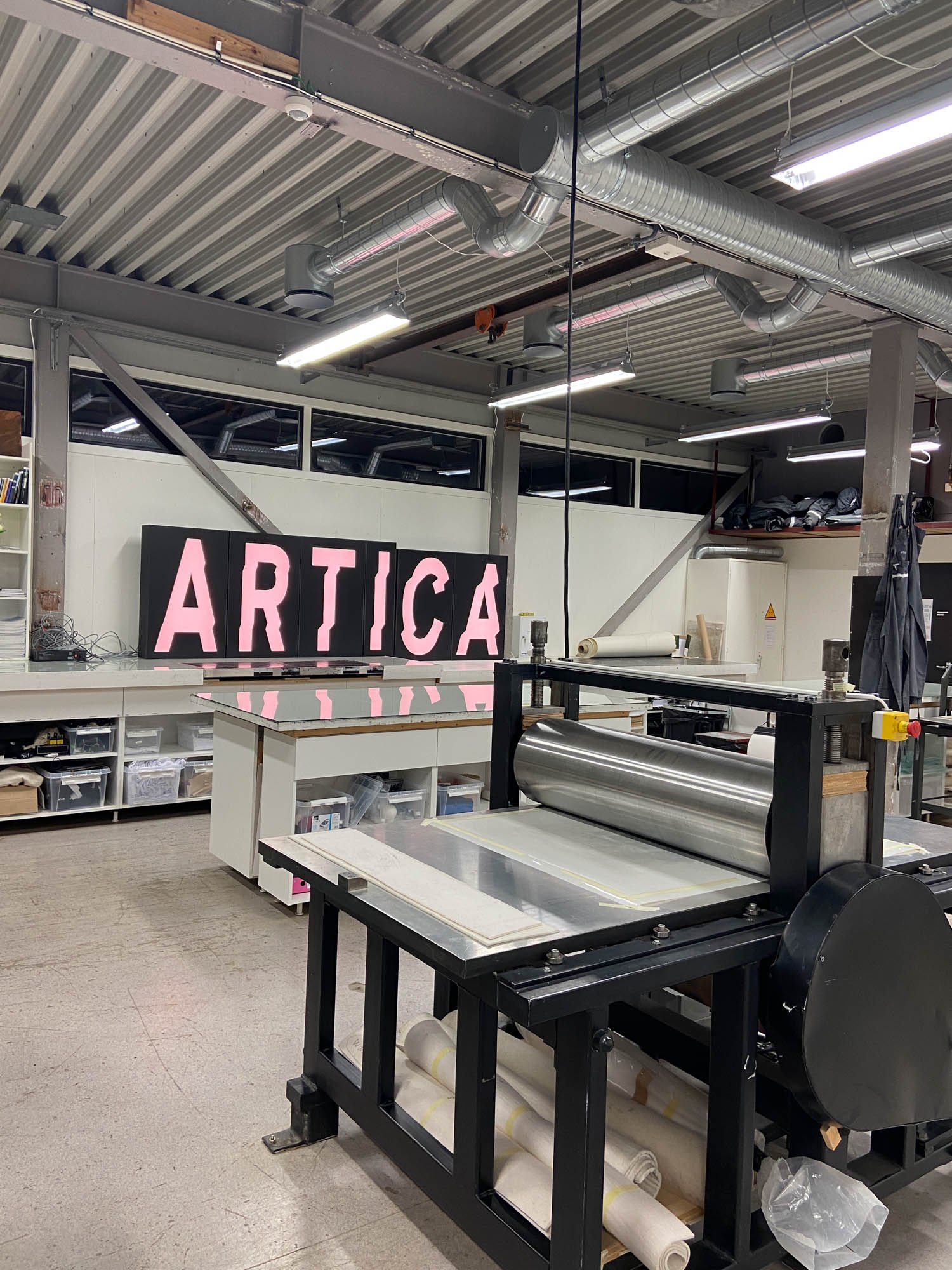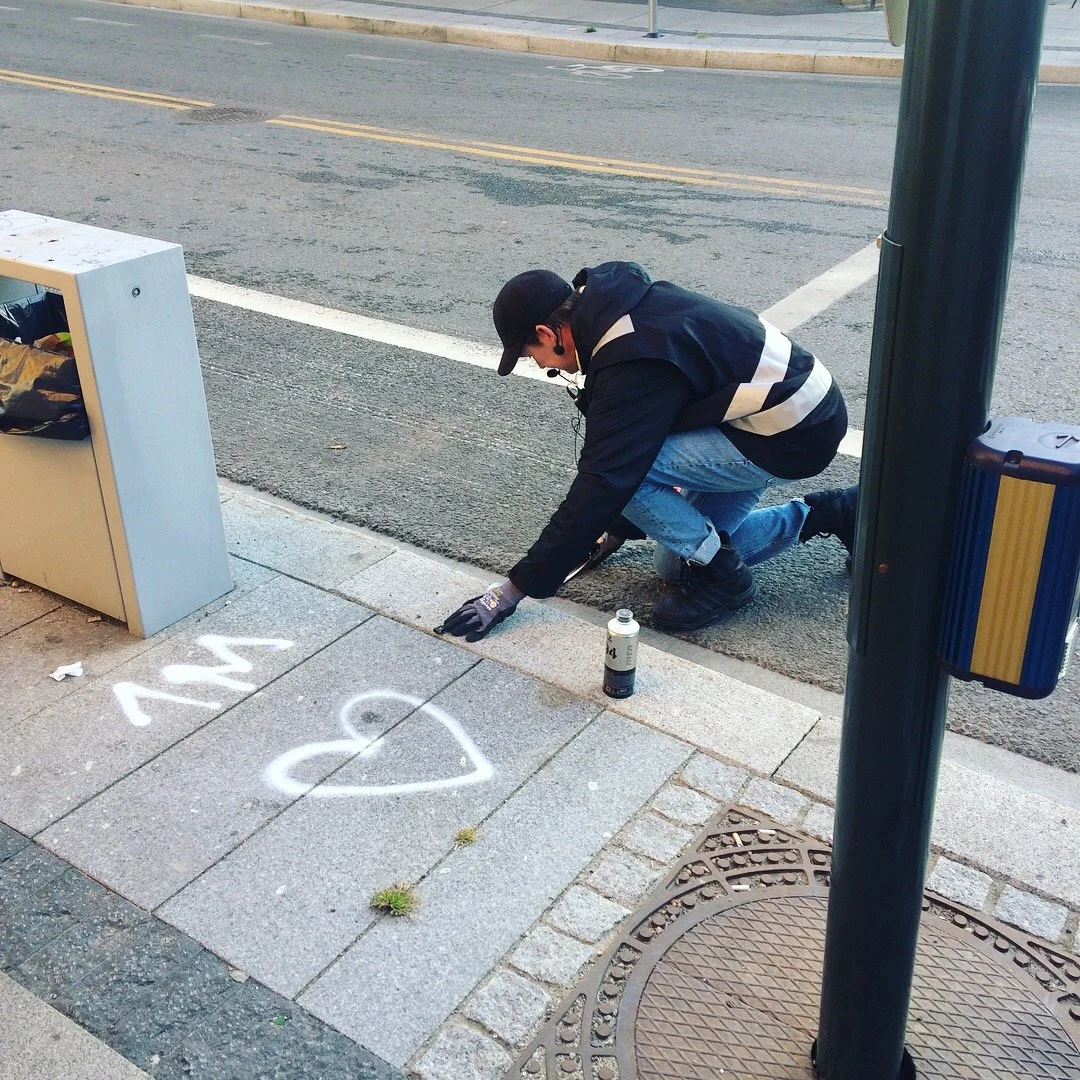Artica Svalbard: sparking conversations through artist residencies in the world’s northernmost town
Interview with Charlotte Hetherington, director of Artica Svalbard.
As the pandemic wore on in 2020, Charlotte Hetherington decided to leave her beloved job in London for a new opportunity as director of Artica Svalbard. She has no regrets. In our chat she spoke vividly about the Svalbard art scene, last year’s highlights at Artica, future plans, and leaving London for Longyearbyen.
Interview by Hilde Sørstrøm
The now five-year-old foundation Artica Svalbard is offering artist residencies and facilitating public art and cultural events in Longyearbyen. With key partners OCA (Office for Contemporary Art Norway), Norwegian Pen, The Queen Sonja Print Award and joining this year, Nordnorsk Kunstmuseum, Artica is able to welcome artists from different artistic disciplines. The residents are provided with a studio, a well equipped print workshop and close contact with the Arctic landscape. Though the weather in this part of the world can be challenging for both visitors and the approximately 2300 inhabitants, many artists do go there to make art, to research or to engage with the local community. For Charlotte Hetherington, who has been the director of Artica Svalbard since autumn 2020, community engagement is particularly inspiring.
Where did you work before you started your job at Artica and what first drew you to Svalbard?
– I was in London working as an artist Liaison at a gallery called Thomas Dane Gallery. I absolutely loved my job. When everything changed, and we were all working from home, I started to think about parts of my career to date that I’ve enjoyed and things I’d started to miss. And it was community engagement that I really missed. Whilst I was thinking about all of this the job for Artica came up in my email. It showed you this beautiful photograph of the mountain and the pink sunset and I was looking out on a grey London and thought, «Okay, I think I want to be there».
And how has this first year been?
– I left London during the lockdown and then arrived in this beautiful place that was just about to go into the polar night. It was actually a good time for me to meet lots of people as I think everybody is a little bit more, you know, they want to meet for coffee and they want to be inside and do things. And everybody is so welcoming. They want to know who you are, why you’re there, for how long you are there for, so it was just really nice to be able to actually talk to people and discover this place. As the light came back I discovered more and more about this amazing place. It’s been a year of learning. Getting to know the society, the culture, the politics and just find my place within all of that. But obviously also a challenge. The weather is very, very different to the UK. But so far I love it.
You have four apartments available for artistic residencies, is that so?
– Yes. We have four apartments. But it’s actually quite hard to have four people in the studio space, or workshop space, at the same time. So more realistically it’s easier to manage three. To have one print-based artist and then another visual artist that’s working in a different medium, and then a writer or a researcher.
How does the artistic residency program work today?
– We meet with each resident digitally quite early on to discuss their practice and what they would like to do whilst they are with us. Then we discuss if there is anything in terms of engagement that they are interested in. Not all of the residents want to do that. Some want to come and do research, get on with their work and that’s totally fine. Other residents are really keen to engage. We’ve had 10 fantastic residents in 2021 and some really wonderful events. We’ve also hosted quite a few print-based workshops because of the print studio. They’re always incredibly popular.
Can you mention some highlights from last year’s public events?
– Early in the year, the artist Line Prip was here. She is interested in boundaries in her work, and she was very interested in the fact that as a visitor – unless you are with somebody – you can’t leave the boundaries of Longyearbyen. She walked the circuit of the town over and over again. Then we decided to do a walk with the community. We invited a Longyear local, called Anne Lise Klungseth Sandvik, who has lived here for a very long time. She gave her personal stories about Longyearbyen, and some history of the buildings on this walk. That was really lovely, and a nice way to start the year.
– Then this year Artica listens was with the artist Ignas Krunglevičius. He was a OCA nominated resident in 2020 and it was during that time that we got to go inside this old coal power plant building, it was just incredible. In 2021, Ignas came back with his «catalogue» of different sounds and started to play with the building. He used the building as a speaker and generated different experiences within the rooms for the visitors as they walked through.
How did the Svalbard audience find it?
– I was quite anxious about doing it because I’m used to a typical art crowd who will come to things. This is a totally new territory, a totally new audience. On the opening night it was actually really miserable weather. It was raining and it was really windy. I was thinking, «Oh no, nobody is going to come» and then all of a sudden all of these people started to walk around the corner and we had a big queue of people waiting to get in. So it was really great. They stayed for the whole evening and everyone has just been so positive about the project.
What is the idea behind Artica Listens really? And do you have any special plans for 2022?
– The aim is to host this annual event which will highlight key issues related to the polar regions and their global influence, using a variety of project mediums. Since the launch in 2019, we have hosted panel discussions around the future of Svalbard, screened new artists films inspired by the Svalbard Treaty and used abandoned historical buildings to spark conversation about the future of a community.
– This year our theme is Return to Nature, we will produce a series of short essays and host a cross-border symposium in Tromsø. Asking leading experts from around the world in energy, material science, the arts, architecture, Indigenous communities and local communities questions such as, ‘How can our environmental responsibility be compatible with local communities’ impact on the arctic’, ‘How can communities reduce, reuse, recycle in remote places’ And ‘What would it look like if we worked with nature and design to help solve some of these issues.’
Tell me about the Svalbard art scene.
– It’s obviously a small community, but it’s a very vibrant community who’ve been really welcoming since I arrived. Just within this year there has been a lot of change. The Galleri Svalbard in Nybyen has closed down temporarily because it is relocating to a new space in the centre of Longyearbyen, above our supermarket. It’s a really big space that is going to have temporary exhibitions, a movie theatre and a youth club. The idea is that the exhibition space will be used by what was Galleri Svalbard to show their collection and host some temporary exhibitions alongside Kunsthall Svalbard, who will have a presence again in Longyearbyen with temporary exhibitions. If Artica have a resident that would like to show something or host a project then it can be used for that purpose. It’s going to be a dynamic shared space, offering the community and visitors new opportunities to experience the growing Svalbard culture scene.
– In the old gallery in Nybyen, some of the creative community had their artist’s studios and offices there, they asked Lokalstyret if they could keep using the building for the next three years. This project has been agreed and under the leadership of artist Elizabeth Bourne, Spitsbergen Kunstnersenter will host residencies and activities throughout the year. I feel like Artica is one of these three strong pillars of creative output happening in Longyearbyen. The energy is really quite exciting.
When will this new space open?
– I think the aim is for summer 2022
And Artica is also now working with the Nordnorsk Kunstmuseum who runs Kunsthall Svalbard?
– Yes. Our relationship and collaboration with key partners OCA, The Queen Sonja Print Award and Norwegian Pen will continue. Then the Northern Norway Art Museum will join as a new nominating partner this year. Both Nordnorsk Kunstmuseum and Artica believe the arts are vital to understanding the challenges facing us both locally and on a global scale; a collaboration between our organisations is a natural next step in strengthening the bond between Svalbard and Northern Norway.
Artica recently joined the Nordic Alliance of Artists’ Residencies on Climate Action, what does that mean?
– It’s a two-year project that has been funded by the Nordic Culture Fund and Kone Foundation in Finland. The founding members are Cove Park in Scotland and Saari Residence in Finland. The other partners are the Arctic Culture Lab in Greenland, Art Hub Copenhagen, Baltic Art Centre in Gotland (Sweden) and Skaftfell: Center for Visual Art in Iceland. It’s going to be very much about how we share knowledge internally as a group but also with our communities. We’ve been meeting as an alliance, discussing ideas, plans and projects for this year.
What can you say about the 2022 program?
– I’m really excited. There’s going to be – touch wood, fingers crossed, – international guests again!
We welcomed our first resident, Bergen based writer, Vibeke Koehler in January. During her stay Vibeke will host a climate focused workshop for the community that sits quite well with our theme for 2022. Participants will have the chance to share their dreams and visions for the future of Svalbard.
– Then we have artist Ingrid Wildi Merino who joins us from Chile. She wants to try to make three new films based on themes around the geology of Svalbard, looking at the history of coal.
– In April we have the artist-researcher Susan Schuppli, based in London. She works a lot with film, sound and documentary. She is coming to make a series of podcasts as part of her on-going project «Learning from Ice». The podcast will be streamed as part of the Toronto Arts Festival at the same time as her residency. That’s a really interesting project for us to be involved with. Joining in June, we have Erling Pedersen, a children’s writer, who would like to research one of Svalbard’s migratory birds; he will develop the ice gull as a character in one of his upcoming stories.
What are your hopes for Artica Svalbard in the future?
– Well, it’s been a really fascinating year of learning. We turned five years old in 2021 and I think this is a good opportunity for us to look back and to ask new questions, Where do we go from here? How do we want to grow? Do we want to think about hosting more residents throughout the year? Can we host residents from different practises? Do we need to physically grow, with a bigger building and more space?
– I feel like I’ve been doing a lot of reflection on the past and looking at all the different things we have achieved. It’s been a bit of a bumpy journey to get to this fifth year. Like all new institutions, you have to find yourself. Now I think it’s about sustainable growth, and it’s about managing that local and global relationship which can be challenging. Because you want to be able to engage with the community and that is something very important for me. But then you also want to make sure that internationally, people know that we are there and that they are thinking about the politics that are happening in Svalbard and in the north, and their impact, especially at this time. So the next two years for me are going to be about that balance and making sure that we are local and global.




